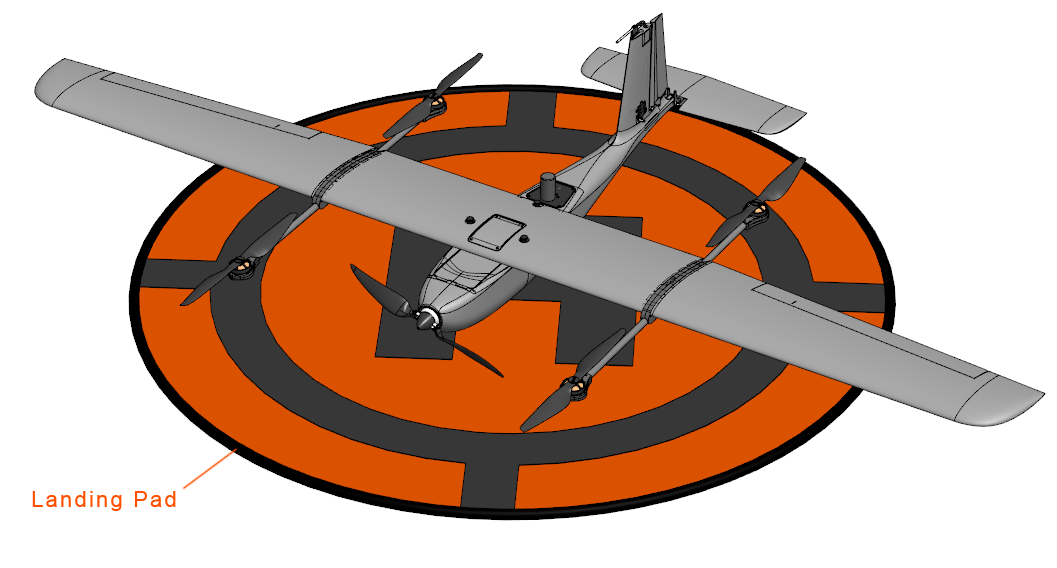Cleaning and Storage
Disconnect batteries before cleaning the aircraft. Use a damp cloth or compressed air to remove dirt and dust from the Lynx VTOL airframe. Use a vacuum or compressed air to remove dirt from the inside of the fuselage. Do not use solvents such as rubbing alcohol (isopropyl alcohol) or acetone as they can damage the paint and composite structure of the aircraft. Never submerge or pour water onto the Lynx VTOL airframe as this will damage sensors and electronics.
Caution: Do not blow compressed air directly into the pitot tube as this will rupture the airspeed sensor.
Flying from a Dusty Environment
In dusty environments, motor thrust will kick-up significant dust during takeoff and landing. The aircraft should be cleaned after each flight if dust has visibly accumulated. Ensure the main and VTOL propellers are wiped clean in addition.
Check that each VTOL motor spins freely by hand. A motor that grinds, clicks, or is difficult to turn usually indicates that ferrous (iron) dust, gravel, or sand is stuck to the motor's magnets. Since the dust is likely attracted to magnets, the dust can be tricky to remove. First try a combination of compressed air and vacuuming. Blow air directly through the motor from the top by aiming at the magnets and windings. This is the highly preferred method as no disassembly is required. However, if the dust cannot be removed with compressed air/vacuum, and it is obstructing the motor from freely spinning, the motor will need to be disassembled to wipe away the dust.
See VTOL Motor Disassembly for more info
Dust Mitigation
Use of a large landing pad is an effective way to reduce dust accumulation on the aircraft during takeoff and landing. An eight foot (2.5 meter) diameter pad or larger is recommended for landing accuracy. A landing pad should be considered essential when flying from dirt roads, dry environments, sandy areas, etc.

Tip: We use the eight foot pad from Hoodman at https://www.hoodmanusa.com.
Battery Storage
Batteries should not be stored fully charged, or discharged for longer than a week. Doing so can shorten their life span. If a battery will not be flown within that time period, it should be left at a storage charge instead.
The battery charger will either charge or discharge the battery until the battery is approximately half full, this is considered the best way to store your batteries when not being used frequently.
Make sure to cycle your packs at least once per month if you are not flying the packs since leaving them on the shelf for a prolonged period of time can cause the packs to get severely out of balance, puff/swell or even go dead. The packs can be cycled by charging them, then running the storage function again.
See Battery Storage for more info
Aircraft Storage
Store the aircraft in its transport case at room temperature.